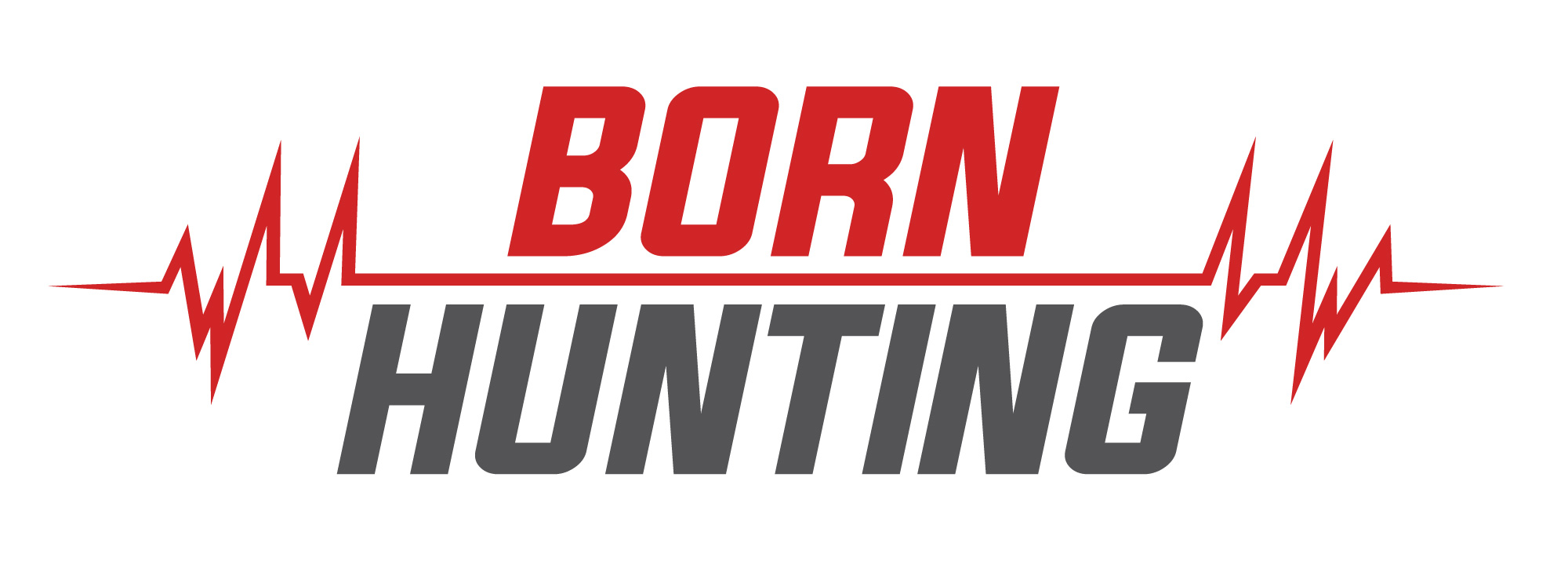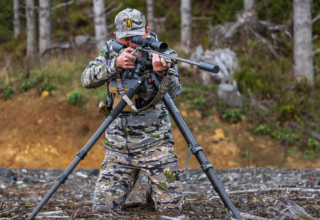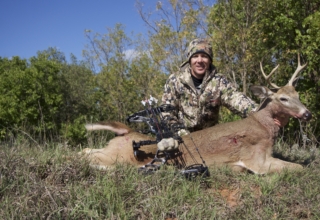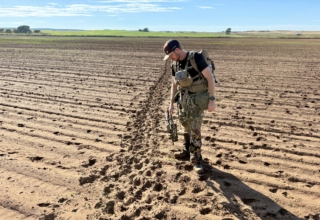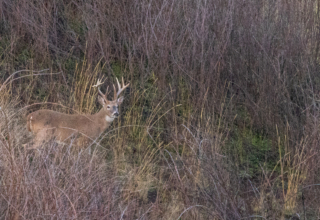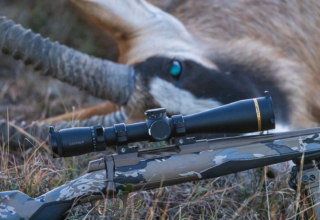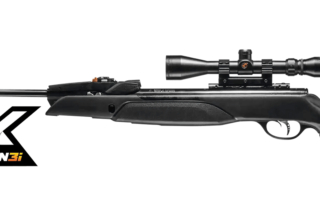With post-COVID herd counts up due to hunters not being able to go to Africa for a year, prices are down, which makes now a great time to book your African safari.
by Scott Haugen
I recently completed my 16th African Safari in 31 years. That’s not a lot of safaris in that period, but it’s enough to speak to the trend of hunting in Africa, specifically South Africa.
I went to fire two shots. One was to be at a sable, the other at a roan. Both antelopes had topped my wishlist since I started going to the Dark Continent. I returned home, having done what I wanted. Two shots, two kills.
Why now? Why didn’t I take these two prized animals on prior hunts? The cost of both animals is the lowest I’ve ever seen. I was hunting with Rosedale Safaris out of Port Elizabeth, South Africa. I’d hunted here before. I also book safaris for this exceptional operation.
The sable cost me $3,800, while the roan carried a price tag of $5,000.
“The cost of pre-COVID roan was $13,500, and sable were $12,000,” said Charl le Roux, owner and lead PH (Professional Hunter) at Rosedale Safaris. “Since COVID, there’s been a surplus of animals, which means prices for many species are at an all-time low.”
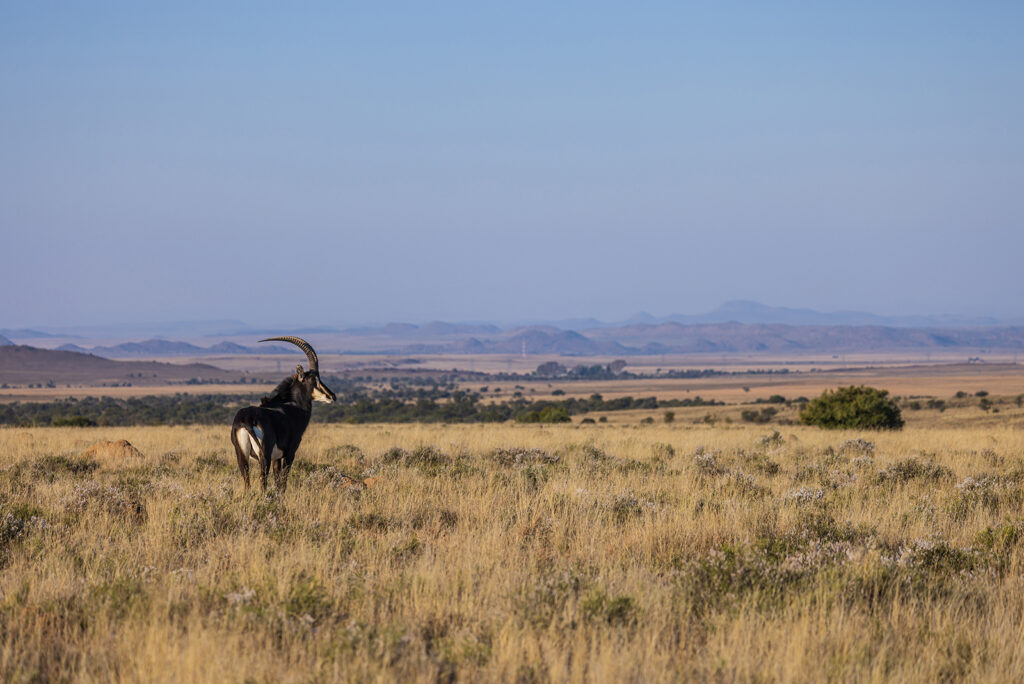
I remember when sable were $15,000 in places I’ve hunted. Other animals, like the prized bontebok, were recently delisted after seven years of CITES restrictions.
The cost of one of these antelope is now $800. Not long ago they were $2,500 and I’ve seen them fetch over $7,000 in places.
Plains game hunting in South Africa is big business. One scan of all the people waiting to board the trans-Atlantic flight will tell you that upwards of half the 747 passengers likely consist of fellow hunters. Do the math on that, with two flights leaving the East Coast daily to Johannesburg, then calculate that over six months. That’s a lot of hunting.
In the mid-1990s, wherever you drove in South Africa, livestock ranches dominated. Today, game preserves prevail for both hunting and photo safaris. With COVID, travel restrictions created more than two years of very little hunting in South Africa. Many operations shut down, some for three seasons. This gave animals time to reproduce and grow. Today, the surplus of animals means PHs can lower prices on what they offer.
“Many outfitters, us included, can now offer very reduced rates for glamour animals like sable, roan, bontebok, and Cape kudu because there are so many of them,” shares le Roux. “The number of animals a hunter can get now, and the overall quality, is better than I’ve ever seen!”
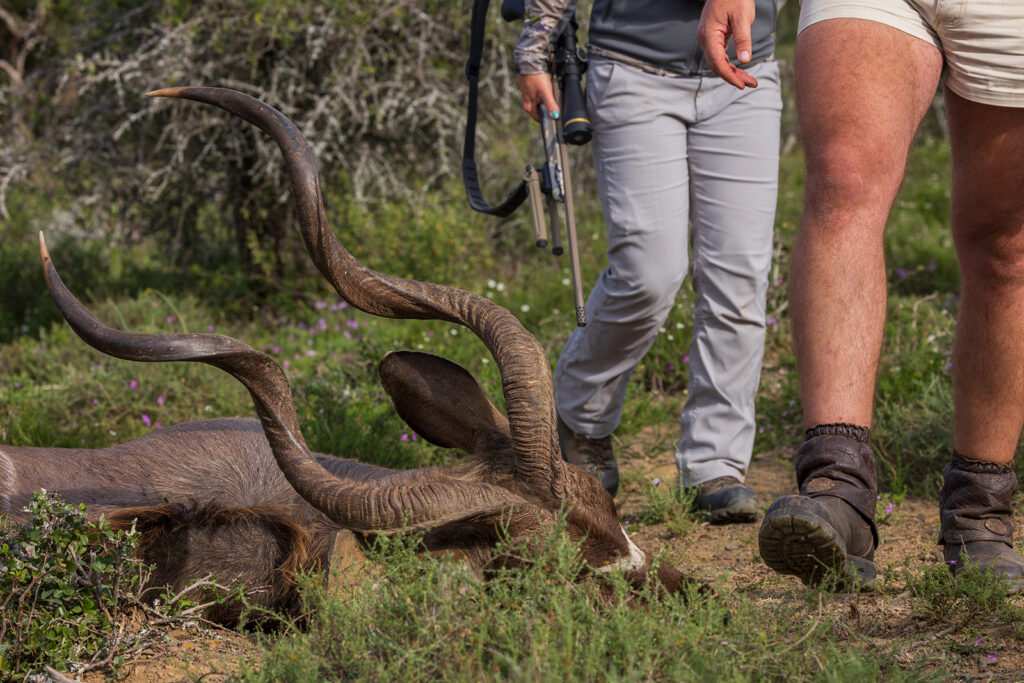
le Roux speaks the truth. While I only fired two shots on my recent safari, six friends from the hunting industry accounted for over 50 more big game animals during our safari. One buddy took the biggest waterbuck I’d ever seen, another the largest eland I’ve ever put my hands on. Numerous more animals were of record book quality, including my sable and roan, which surpassed numbers considered almost unreachable 30 years ago.

I’ve been fortunate to take many record-book animals in multiple countries in Africa; I’ve just never officially entered them. If hunting for high-quality game of record-class caliber is your goal, the time has never been better in South Africa.
What makes le Roux’s operation so unique is the amount of land he has access to. The habitat is vast and varied, meaning more species of animals can be hunted. From the high desert in the Karoo to the southern coast of South Africa, up to the Limpopo River Valley and the rolling hills between, le Roux can hunt for over two dozen species.
I hunted with my buddy, Jace Bauserman on the first day of our safari. It was Jace’s first trip to Africa. I love seeing Africa through the eyes of a first-timer.
One thing Jace appreciated was the number and species of animals we saw. “I’ve seen more animals today than in the last 10 years of hunting at home,” he smiled as we left the massive area we’d been hunting all day. He also took the biggest eland I’d ever seen in this location.
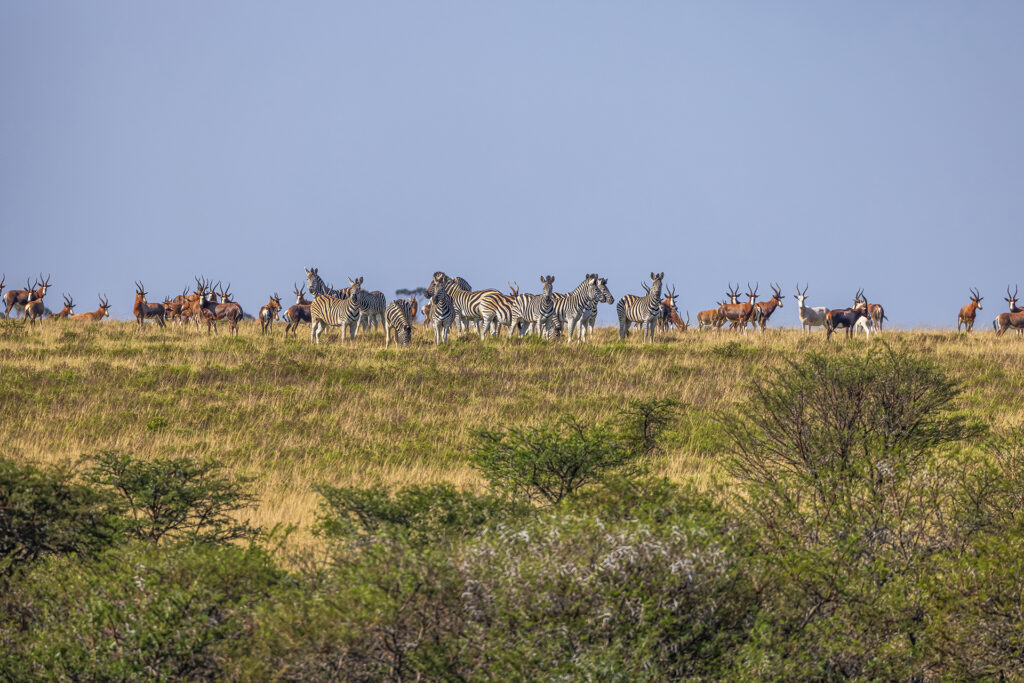
“What’s the most species you’ve seen in a day, here?” he asked me.
“Seventeen,” I smiled.
“Well, we’re at 15 right now,” he came back.
When we pulled into the lodge right before dark, two ostriches ran across a meadow and behind them stood a herd of blue wildebeest. “That’s it, 17!” Jace shouted.
Think about it. Where else can you go and see 17 species of huntable big game animals, let alone in a single day?
A South African safari serves many purposes. For some it’s the quest to attain multiple species. If you’re a long-range shooter, Africa offers more opportunities in a week than in multiple seasons back home. And if shooting eight to 10 trophy animals at long range isn’t enough, consider a cull hunt. Heck, even if long-range shooting isn’t your deal, you’ll still want to consider a cull hunt.
Cull hunts are very popular in South Africa and they’re hunting’s way of helping control burgeoning populations of big game. These hunts can take on many forms, from night hunts for warthogs that are uprooting prime tracts of land, to springbuck herds numbering into the hundreds. Cull hunts may equate to taking out the old, weak, diseased, and even trophy-class animals with broken or misshapen horns. Even overpopulated giraffe are culled, and often meat from such hunts is donated to local villages where they feed thousand of people.

One of the most significant benefits of a cull hunt is shot repetition. You can punch paper all you want, but if you are serious about taking your shooting skills to another level, the best way to do it is on animals. Studying animal behavior and learning when to take the shot is essential. The process of repetition teaches you to calm your nerves, relax, and focus.
“Shooting 25 to 35 animals in a week is doable on a cull hunt,” shares le Roux. “We get many hunters wanting to simply build their shooting skills at big game, and what better way to do it than on a cull hunt?”
Last year, a bullet company offered me a hunt for one whitetail buck on a ranch in Texas.
“Let me get this straight,” I said to the man on the other end of the phone. You want me to fly to Texas, take one shot at a deer, and write about how good your bullet is?”
“Well, um, basically, yeah,” the rep came back.
“Why not get me 10 management doe tags or send me to Africa, where I can shoot 30 animals in a few days? Then I’ll let you know my thoughts on the bullet.” I kindly declined the deer hunt.
Think about how many animals you’ve shot in North America over the past decade. Now think about going to Africa and pulling the trigger on 35 big game animals in a week. Not only will doing this build solid shooting skills, but it’ll also leave no question about the performance of your gear, from the bullets to the rifle to the scope.
On my hunt for sable and roan, I had ulterior objectives. First, I wanted to see how Browning’s 6.8 Western in their new X-Bolt 2 Speed SPR performed. I’d only shot one animal with this caliber at the time. I also wanted to confirm the bullet performance of Browning’s 175 grain Long Range Pro Hunter Sierra Tipped Gameking. I’d seen buddies kill elk with this bullet, and I wanted to test its performance on Africa’s big, thick-chested, tough antelope. I also wanted to try Leupold’s new VX-6HD rifle scope in a 3-18×44.
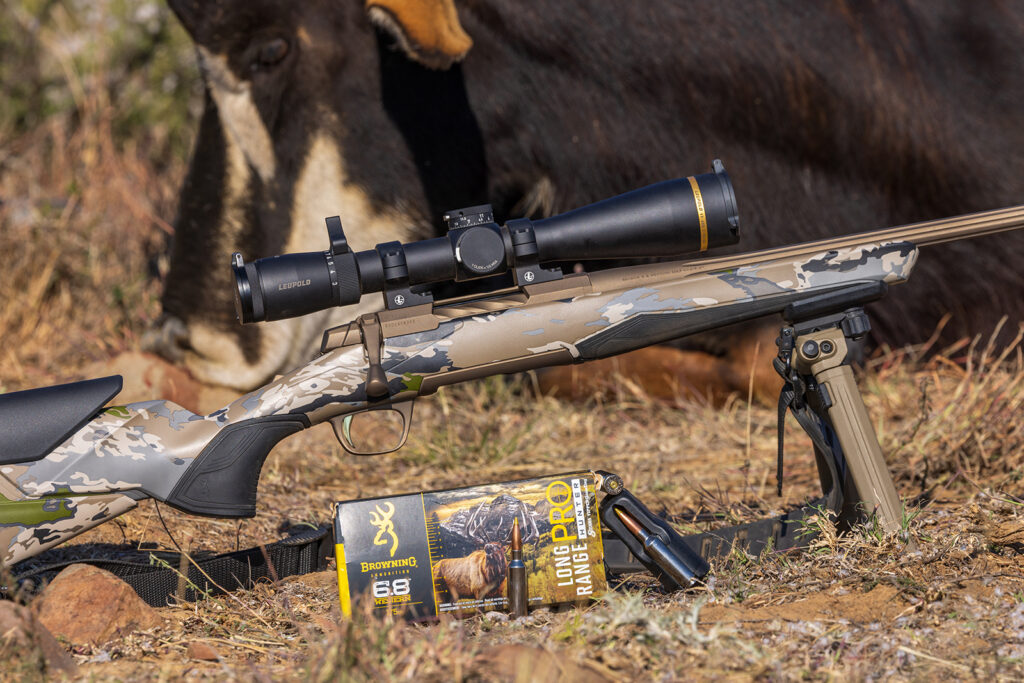
The CDS was calibrated for the average elevation to be hunted in South Africa. Every bit of gear performed flawlessly. Three other hunters took multiple big game with this same setup. I was so impressed that I ordered the exact rifle, scope, and ammo that I’ll be using on deer, bear, and elk hunts this season and for moose next year in Alaska.

No other place confirms gear performance quicker than an African Safari, and no other hunting experience can grip you like Africa.
In my lifetime, never has the timing been so good to hunt South Africa. Plentiful, high-quality game and at affordable prices, now is the time to check off that bucket list dream hunt. And trust me, by the time your plane touches down on American soil, you’ll be planning your next African Safari.
